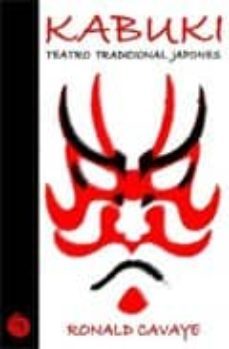Imprescindibles
Ficción
No Ficción
Ciencias y tecnología Biología Ciencias Ciencias naturales Divulgación científica Informática Ingeniería Matemáticas Medicina Salud y dietas Filología Biblioteconomía Estudios filológicos Estudios lingüísticos Estudios literarios Historia y crítica de la Literatura
Humanidades Autoayuda y espiritualidad Ciencias humanas Derecho Economía y Empresa Psicología y Pedagogía Filosofía Sociología Historia Arqueología Biografías Historia de España Historia Universal Historia por países
Infantil
Juvenil
#Jóvenes lectores Narrativa juvenil Clásicos adaptados Libros Wattpad Libros Booktok Libros de influencers Libros de Youtubers Libros Spicy Juveniles Libros LGTBIQ+ Temas sociales Libros ciencia ficción Libros de acción y aventura Cómic y manga juvenil Cómic juvenil Manga Shonen Manga Shojo Autores destacados Jennifer L. Armentrout Eloy Moreno Nerea Llanes Hannah Nicole Maehrer
Libros de fantasía Cozy Fantasy Dark academia Hadas y Fae Romantasy Royal Fantasy Urban Fantasy Vampiros y hombres lobo Otros Misterio y terror Cozy mistery Policiaca Spooky Terror Thriller y suspense Otros
Libros románticos y de amor Dark Romance Clean Romance Cowboy Romance Mafia y amor Romance dramatico Romcom libros Sport Romance Otros Clichés Enemies to Lovers Friends to Lovers Hermanastros Slow Burn Fake Dating Triángulo amoroso
Cómic y manga
Novela gráfica Novela gráfica americana Novela gráfica europea Novela gráfica de otros países Personajes, series y sagas Series y sagas Star Wars Superhéroes Cómics DC Cómics Marvel Cómics otros superhéroes Cómics Valiant
eBooks
Literatura Contemporánea Narrativa fantástica Novela de ciencia ficción Novela de terror Novela histórica Novela negra Novela romántica y erótica Juvenil Más de 13 años Más de 15 años Infantil eBooks infantiles
Humanidades Autoayuda y espiritualidad Ciencias humanas Economía y Empresa Psicología y Pedagogía Filosofía Historia Historia de España Historia Universal Arte Cine Música Historia del arte
Ciencia y tecnología Ciencias naturales Divulgación científica Medicina Salud y dietas Filología Estudios lingüísticos Estudios literarios Historia y crítica de la Literatura Estilo de vida Cocina Guías de viaje Ocio y deportes
Ronald Cavaye
Recibe novedades de RONALD CAVAYE directamente en tu email
Filtros
Del 1 al 2 de 2
SATORI 9788493619831
Declarado en 2005 Patrimonio Cultural Inmaterial por la UNESCO, el teatro Kabuki, surgido a comienzos del siglo XVII, constituye en el Japón del siglo XIX un vestigio aún vivo y activo de una época pasada, reflejo presente de la tradición, los códigos y los valores que han regido y, en cierto modo, rigen aún la sociedad japonesa. Asistir a una representación de Kabuki significa dar un salto en el tiempo para sumergirse de lleno en las aventuras y desventuras de Benkei y Yoshitsune o vivir el amor y el desamor de la mano de Sukeroku y Agemaki. Descubrir el Kabuki supone comprobar la absoluta maestría de sus actores, en especial la sublime sensibilidad artística del onnagata, el actor especializado en papeles femeninos
Ver más
Otros
RONALD CAVAYE y PAUL GRIFFITH
KODANSHA EUROPE LTD. 9784770029874
Japanese theater is vibrant and exciting, with a wide range of unique genres to be enjoyed by both visitors to Japan and on tour at arts and drama festivals and theaters worldwide. From the stately refinement of No and the colorful spectacle of Kabuki to the avant-garde of the shogekijo and adaptations of Shakespeare or mainstream musicals, the world of the Japanese performing arts is thriving and innovative. A Guide to the Japanese Stage covers all the main genres as performed today, from traditional to cutting edge. A brief history and introduction to the features of each genre is accompanied by recommendations of entertaining plays that are accessible to non-Japanese audiences. Brief synopses are provided for many often-performed plays, and the best known companies, actors, playwrights, and directors are highlighted. The text is illustrated with 32 color pages and over 150 black-and-white photographs, and includes information on theater listings, how to purchase tickets, and which plays are available on DVD in English. This guide is invaluable for anyone keen to experience Japanese theater firsthand, and will provide additional insights for students of Japanese theater and literature.
Ver más
Tapa blanda
Del 1 al 2 de 2
























